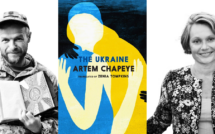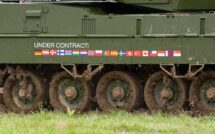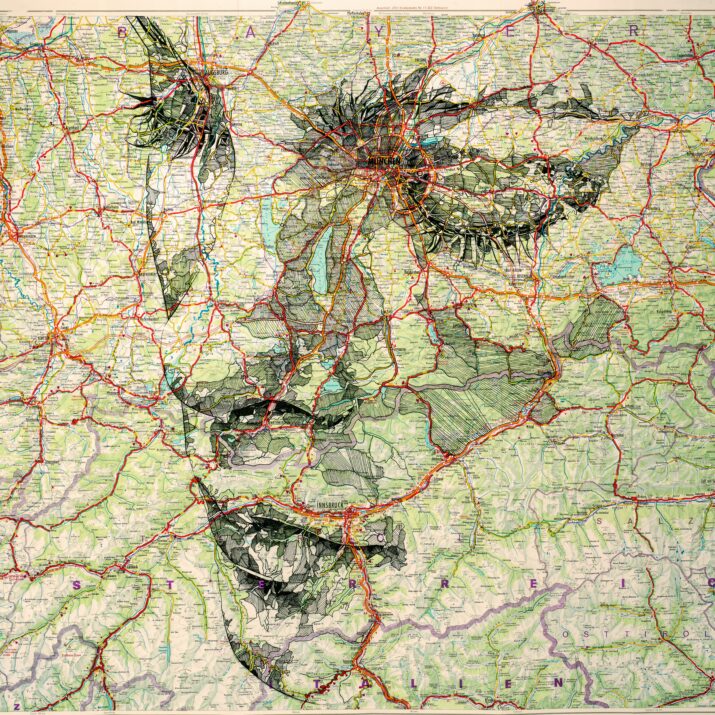
As Europe has been engulfed in a war of culture and borders in Ukraine, the power of maps has resurged in public discussions and political discourse. Certainly, geography and cartography have robust historic ties to war waging and military strategy. Maps allow for a better understanding of the terrain, the topography, and the physical environment of world regions on land or sea (even in outer space). Indeed, maps serve as fundamental operational tools to grasp the world; and geographers, as far back as Antiquity, have long commented on the linkages between the representation of the surface of the Earth and the “art of war,” as well as on the role of cartography in efforts to dominate the globe. But EuropeNow proposes here to extract ourselves for a moment from the current bellicose conjuncture and look at maps differently. This exhibit introduces two artists who give access to unexpected aspects of cartography, taking paper maps as their starting point to unveil and imagine an otherwise unavailable sense of the landscape and propose an approach to the conception of space that transcends the precise and calculated mastery of delineated physical lands usually associated with cartographic representations.
The creations of Mark Garrett and Ed Fairburn captivate the eye, helping viewers connect with maps—and the places on these maps—in novel ways that go beyond the limiting appreciation of strict spatial representation. In their treatment of shapes, contour lines, or colors, these artists appropriate the cartographic instrument to give life to new forms and new meanings that elicit emotions and reflections. While Fairburn’s overpainted portraits emanate almost organically from his careful observation of cartographic features, highlighting the connection between humans and their environment, Garrett’s use of the decoupage technique frees the viewer’s gaze from the restriction of outlined, bounded spaces. Likewise, as he creates humanized landscapes through his portraiture, Fairburn also liberates from the constraints of the map by using “topopointillism” to trigger a new imaginary about the relationship between people and places. These artists’ works at the same time spark outward wonder and inspire an inner meditative flow, engaging the audience into layers of original visual experiences. Whether the viewer looks from up close in search of a familiar place name or from afar where contours become impressionistic, these remappings offer a liberation from the conventions of cartography. Garrett’s and Fairburn’s poetic renderings and graceful imaginings infuse maps with a sense of dreaming that activates a reshaping of the world, which, for a precious instant, takes us away from the terrible, brutal realities of territorial conflict.
—Hélène B. Ducros for EuropeNow
Mark Garrett: Maps / States of Decay / Nebulae
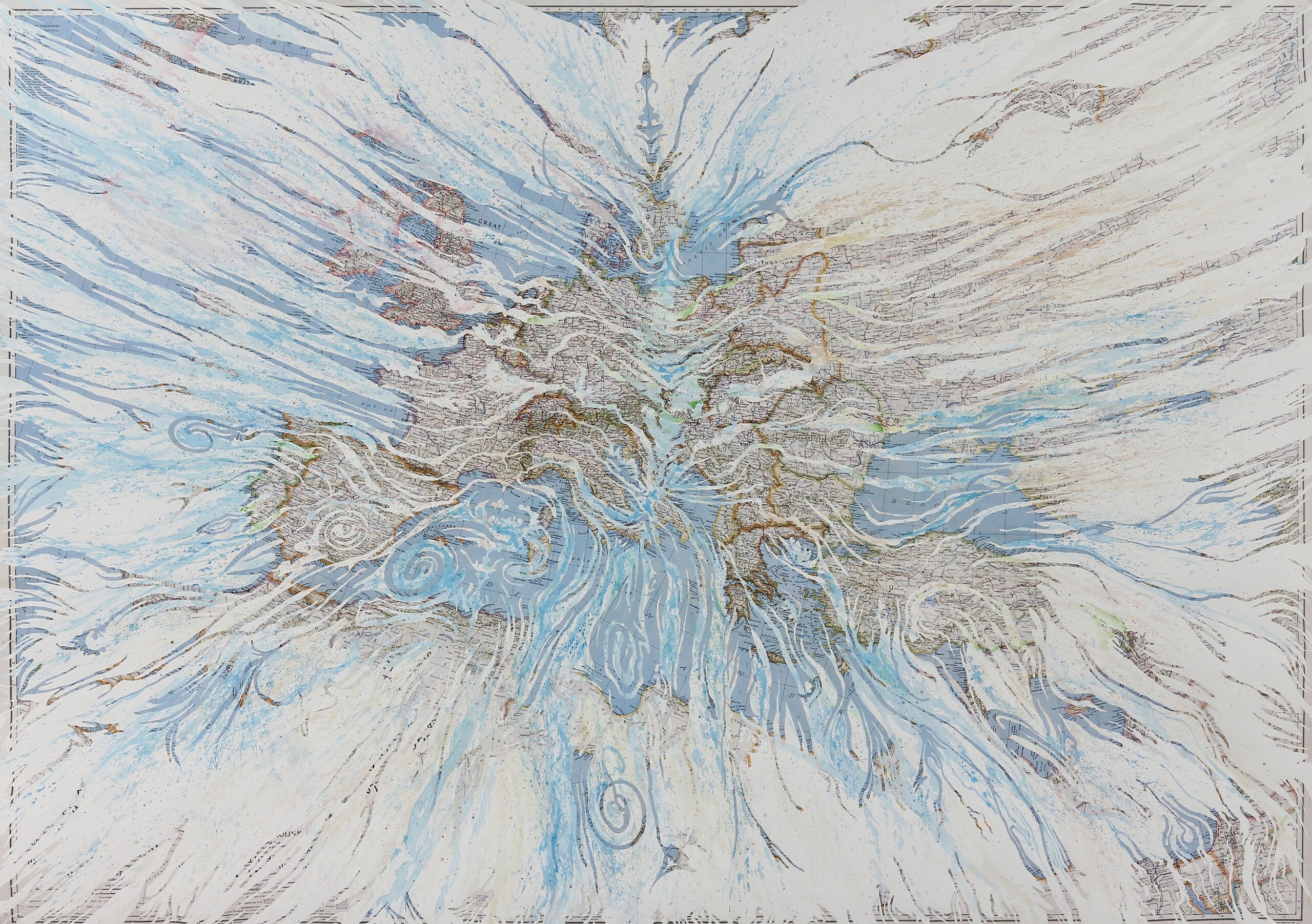

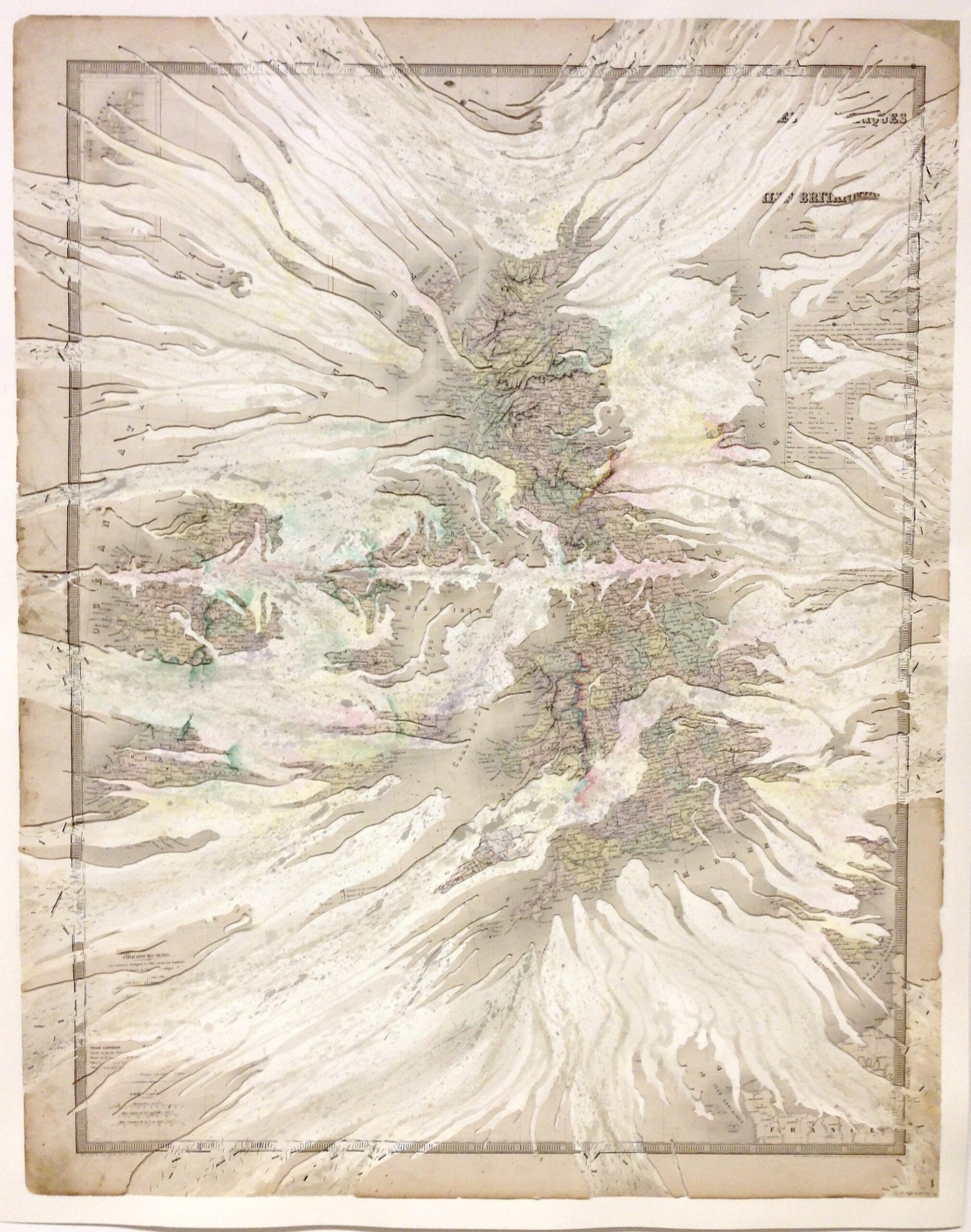
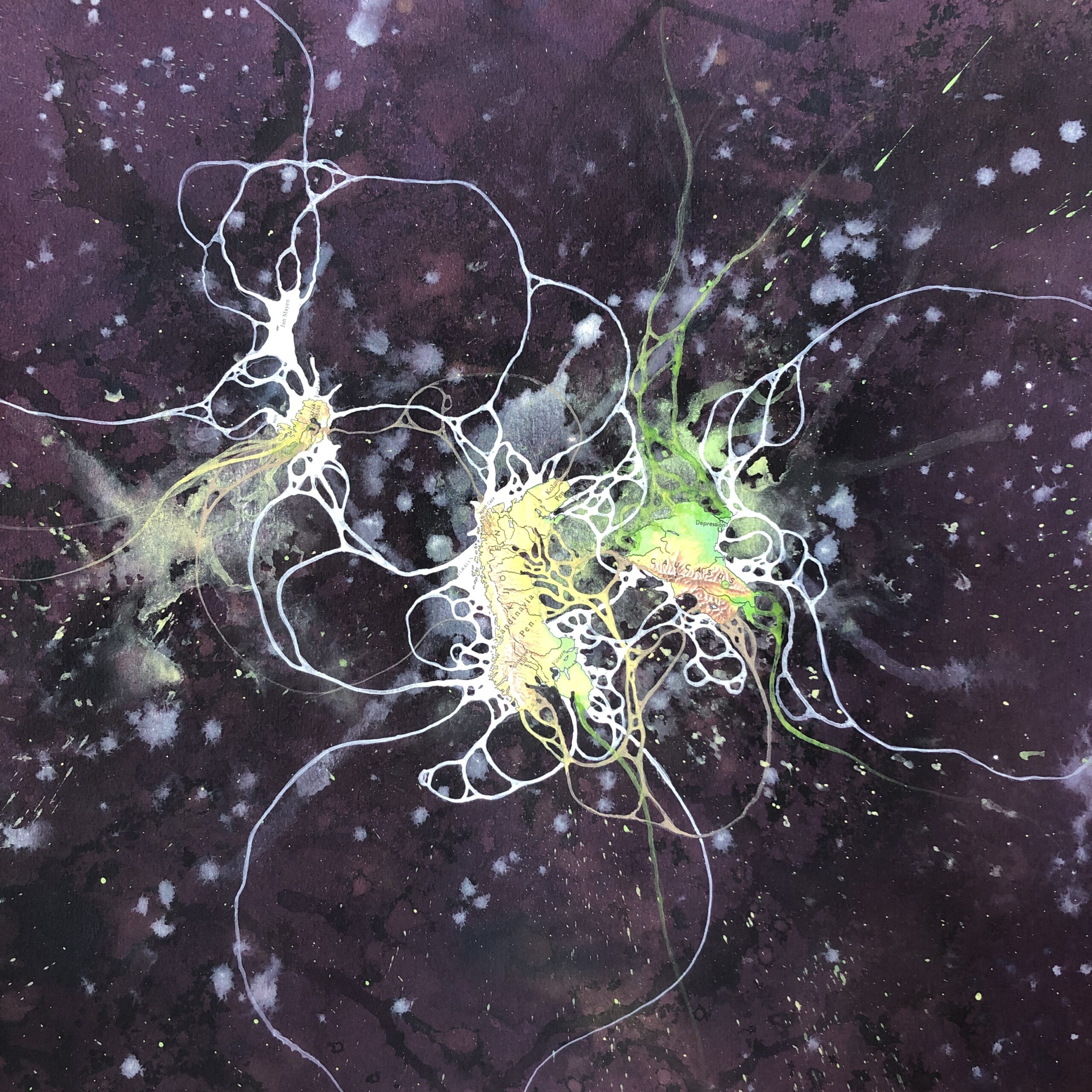
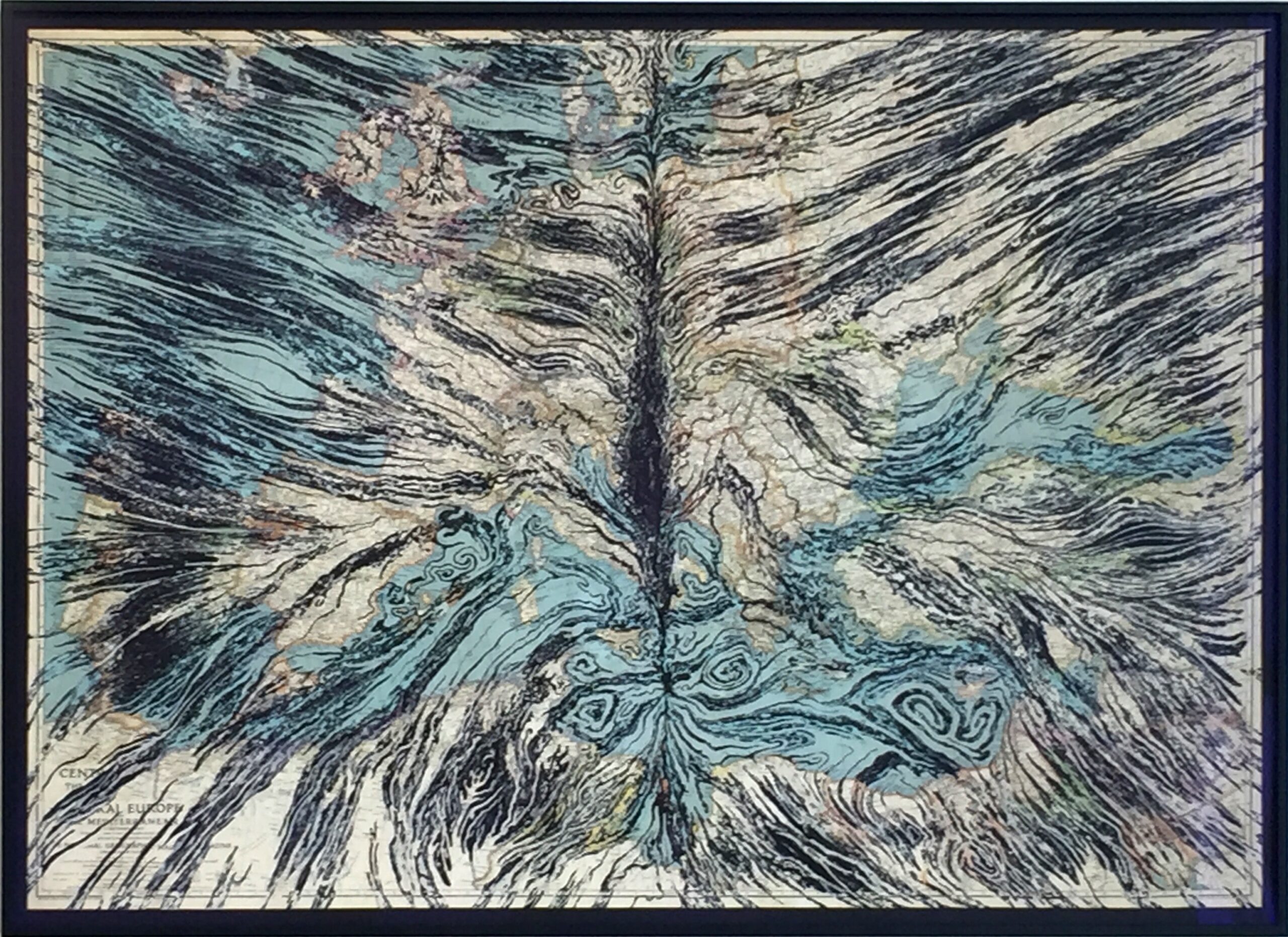
Ed Fairburn: Topopointillism
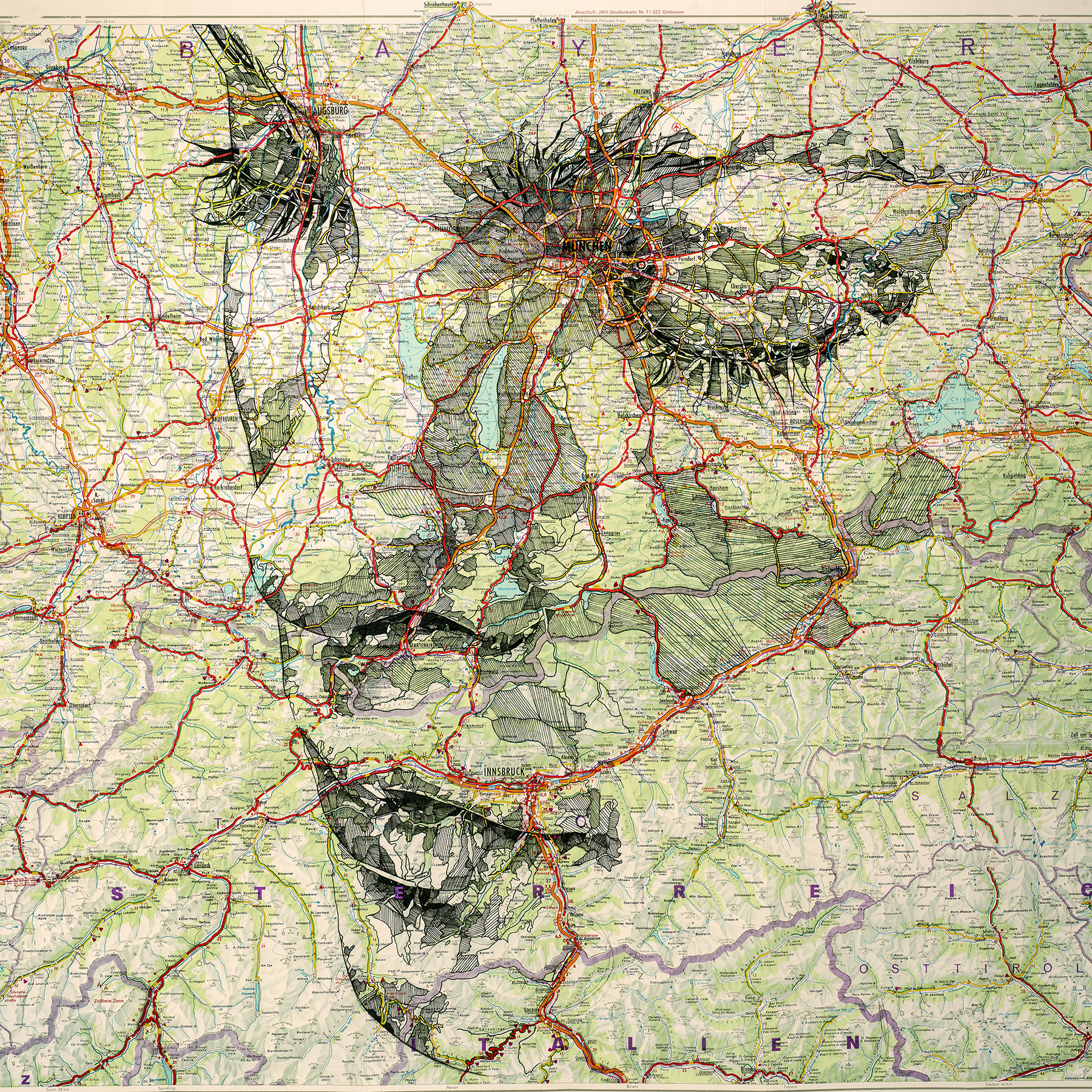
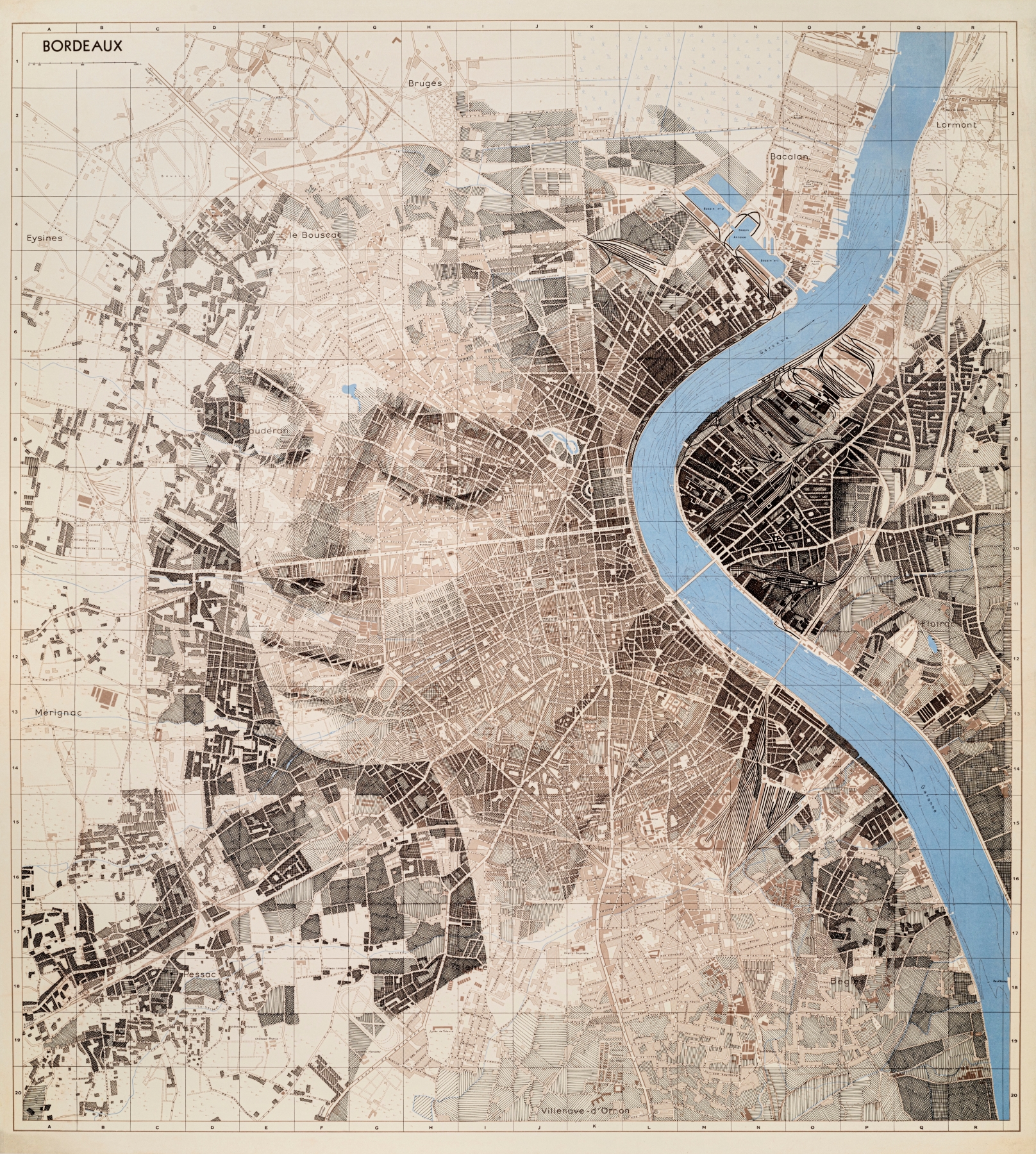
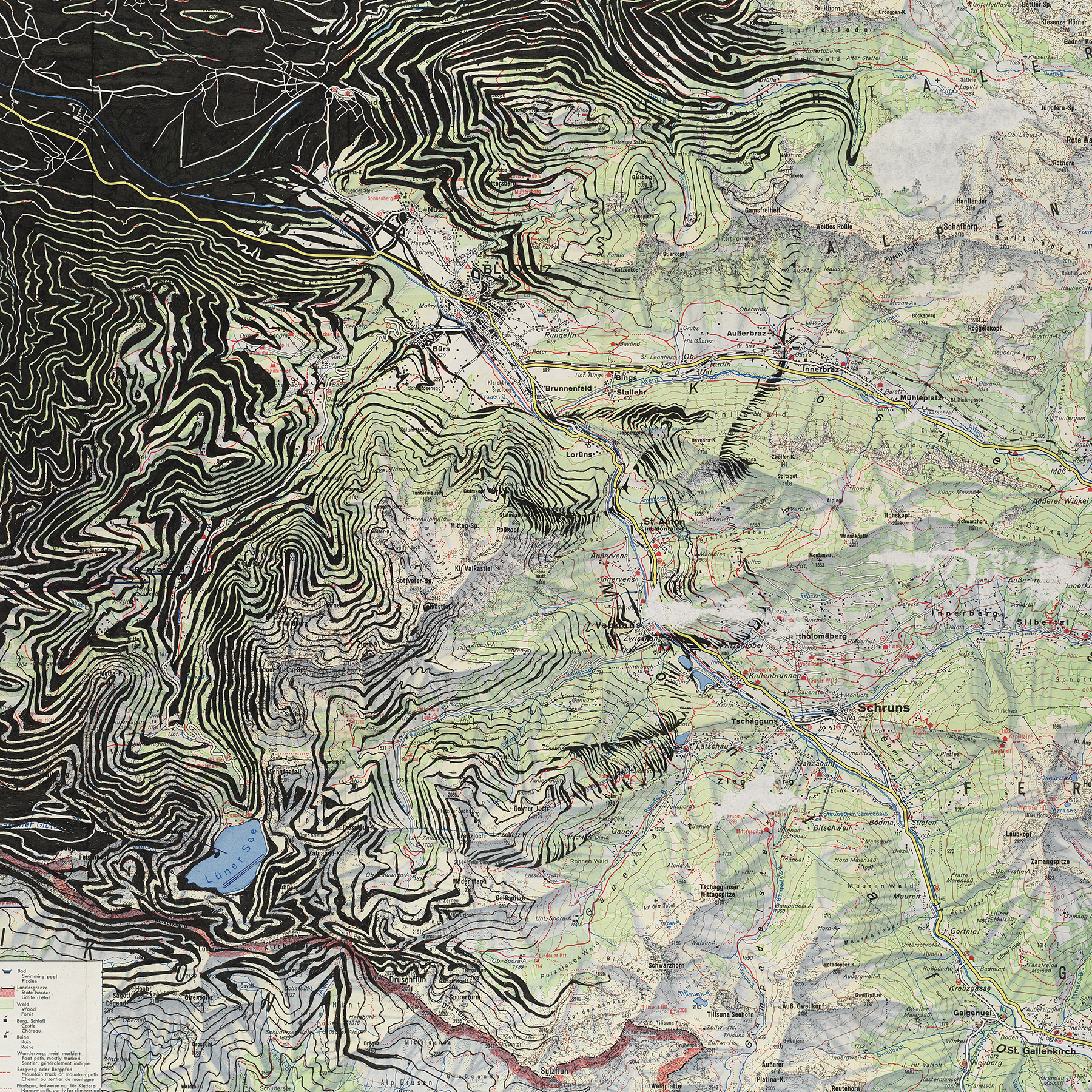
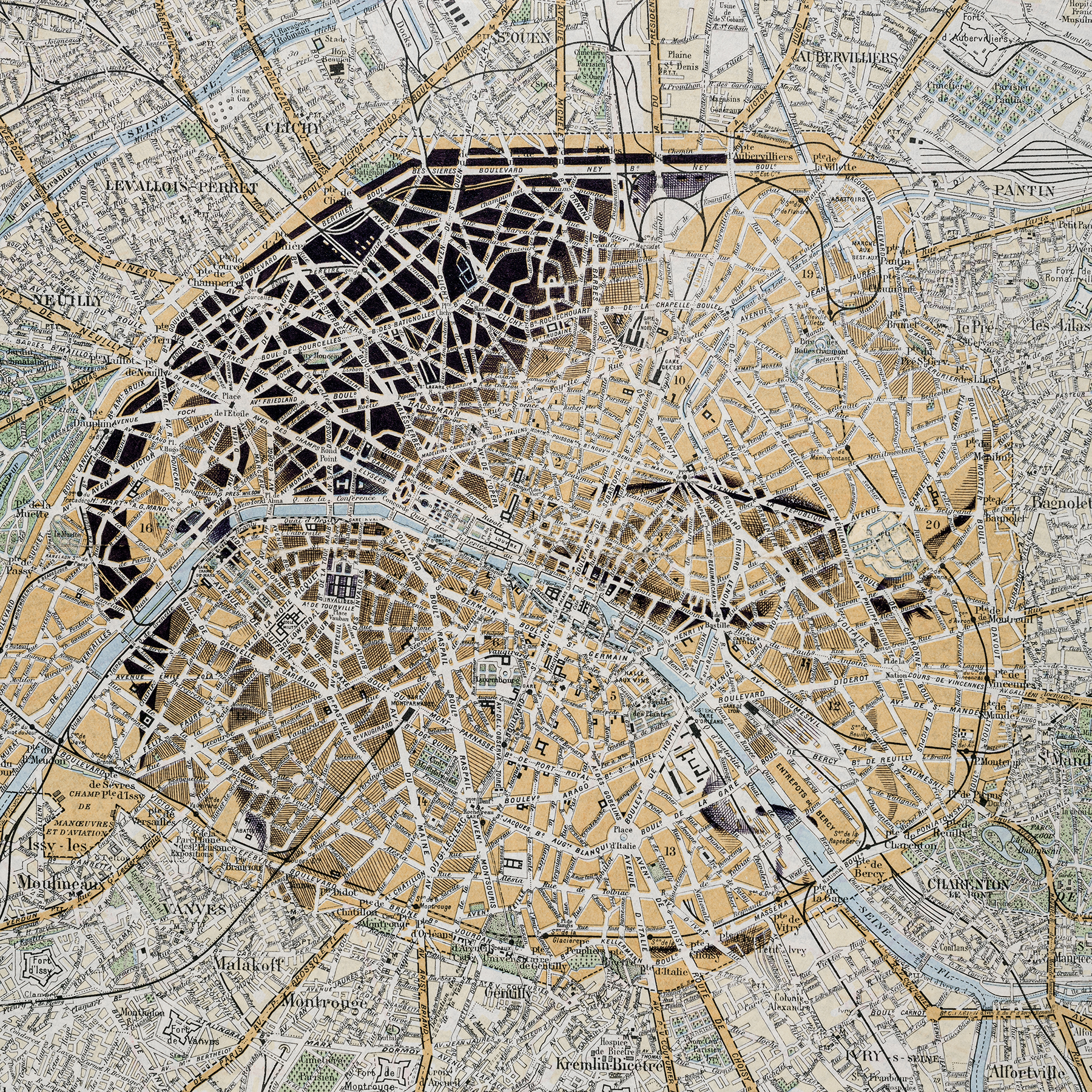
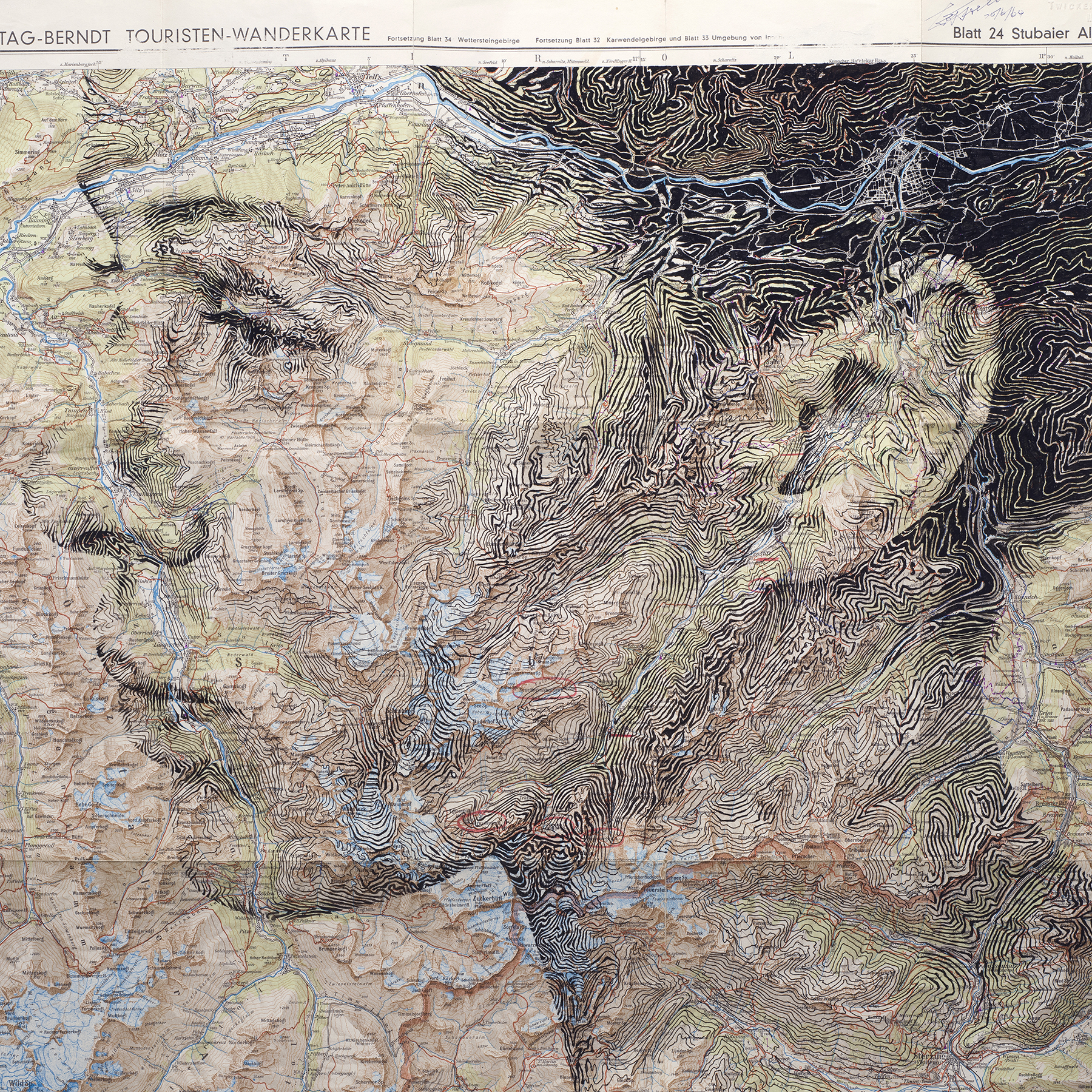
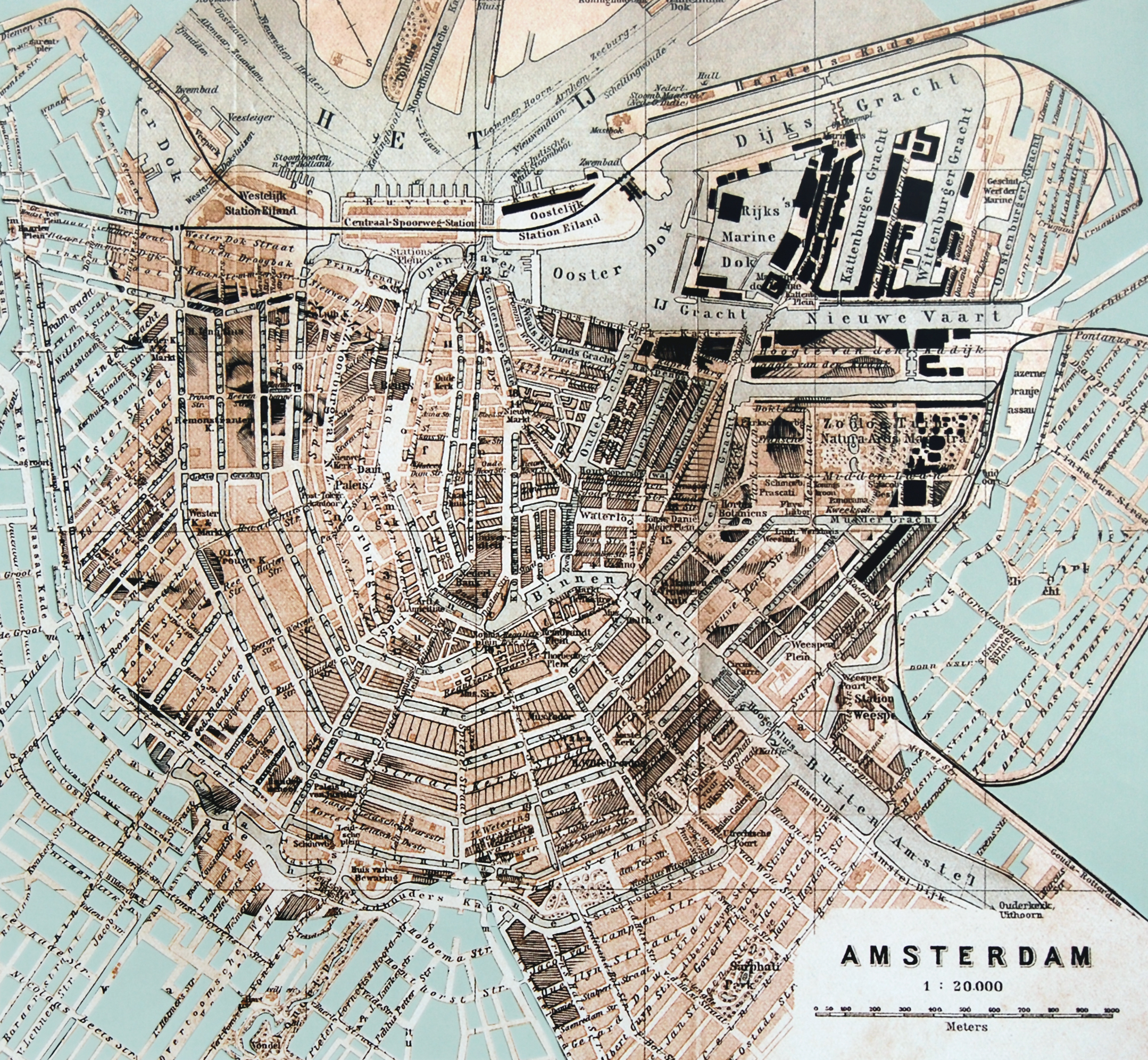
Mark M. Garrett is an artist based in San Francisco who graduated from the Memphis College of Art with a degree in painting and papermaking. His drawings, collages, and assemblages have been shown in numerous exhibitions throughout California, and he has been the recipient of awards such as the Mikkel Svane Family Foundation’s “The Ark” grant and the MCA Traveling/Painting Fellowship. He was also artist-in-residence at the Leo Marchutz School of Painting & Drawing in Aix-en-Provence (France). For him, “the technique of hand-cutting maps and painting in the gaps emerged…as a metaphor of holding the world even as its outlines shift radically and unpredictably.”
Ed Fairburn is an artist and illustrator who graduated from the Cardiff School of Art and Design in the UK. He uses paper maps to create portraiture through a process he calls “topopointillism,” bringing topography and pointillism together as he makes gradual changes to the contours, roads, and other patterns found in cartography. He aims to preserve the functionality of each map and is interested in the way in which his portraits are best viewed from afar. His work has been featured in advertising and publishing and is part of numerous private collections.
Hélène B. Ducros is the editor of EuropeNow. She is a human geographer (PhD, University of North Carolina – Chapel Hill) and holds a law degree as well (University of North Carolina School of Law). She teaches geography and international studies and has a wide array of research interests focused on the way people relate to the landscape, the environment, and their lived space. She is passionate about all things maps and globes.
All images are with permission of the artists @Mark Garrett and @Ed Fairburn.
Published on February 15, 2024.

